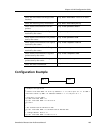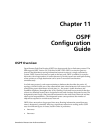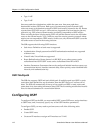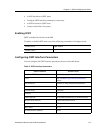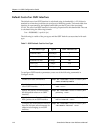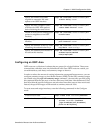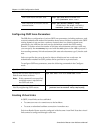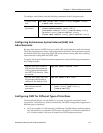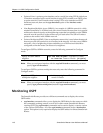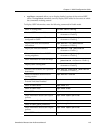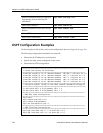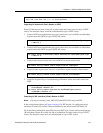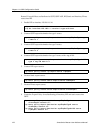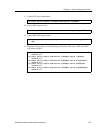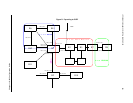
SmartSwitch Router User Reference Manual 117
Chapter 11: OSPF Configuration Guide
To configure virtual links, enter the following commands in the Configure mode.
Configuring Autonomous System External (ASE) Link
Advertisements
Because of the nature of OSPF, the rate at which ASEs are flooded may need to be limited.
The following parameters can be used to adjust those rate limits. These parameters specify
the defaults used when importing OSPF ASE routes into the routing table and exporting
routes from the routing table into OSPF ASEs.
To specify AS external link advertisements parameters, enter the following commands in
the Configure mode:
Configuring OSPF for Different Types of Interfaces
The SmartSwitch Router can run OSPF over a variety of physical connections: Serial
connections, LAN interfaces, ATM, or Frame Relay. The OSPF configuration supports four
different types of interfaces.
• LAN. An example of a LAN interface is an Ethernet. The SSR will use multicast packets
on LAN interfaces to reach other OSPF routers. By default, an IP interface attached to
a VLAN that contains LAN ports is treated as an OSPF broadcast network.
Create a virtual
link.
ospf add virtual-link <number-or-string> neighbor <IPaddr>
transit-area
<area-num>
Set virtual link
parameters.
ospf set virtual-link <number-or-string>
[state disable|enable] [cost <num>]
[retransmit-interval
<num>] [transit-delay <num>]
[priority
<num>] [hello-interval <num>]
[router-dead-interval
<num>] [poll-interval <num>]
Specifies how often a batch of
ASE link state advertisements
will be generated and flooded
into OSPF. The default is 1 time
per second.
ospf set export-interval <num>
Specifies how many ASEs will
be generated and flooded in
each batch. The default is 250.
ospf set export-limit <num>
Specifies AS external link
advertisement default
parameters.
ospf set ase-defaults {[preference <num>]|
[cost
<num>]|[type <num>] |
[inherit-metric]}



